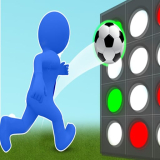In an age where digital experiences increasingly shape the way we live, learning through gaming has risen as a star in the educational galaxy. This comprehensive guide is designed for parents and educators keen to understand and utilize the power of games as a potent force in the academic realm.
Introduction
The crux of modern education is transitioning from passive to interactive learning; a shift fueled in part by the undeniable rise of digital games. For today's savvy educators and proactive parents, harnessing educational games can make learning more enjoyable and vastly more effective. This post dissects the landscape of educational gaming to provide you with the foundation to integrate these dynamic tools into your child's learning journey.
Benefits of Games in Education
Digital games, when appropriately incorporated, have a myriad of advantages that greatly enhance the educational experience.
Engagement and Motivation
It's no secret that student engagement is pivotal to learning. Games can captivate children's interest and maintain enthusiasm through storylines, rewards, and interactive learning environments.
Skill Development and Problem-Solving
Games like puzzles and strategy-based simulations can contribute to specific skill development, including critical thinking and analytical reasoning, which are vital for academic accomplishment.
Collaboration and Social Skills
Multiplayer games can build a collaborative spirit and teach critical social skills such as teamwork and communication.
Types of Educational Games
Educational games take various forms and can be categorized based on their focus.
Academic Subjects
These games are designed to teach specific subjects such as history, science, or languages through interactive and engaging lessons.
Skill-Building Games
Focusing on skills such as time management, financial literacy, or coding, these games simulate real-life scenarios where players must solve problems and make decisions that have educational value.
Collaborative Platforms
Platforms that allow students to work together on projects or problems, fostering teamwork and collective learning experiences.
Implementing Games in Learning
Successfully integrating games into learning requires strategic planning and thoughtful execution.
Integration in Curriculum
Careful selection of games that align with educational goals is the first step. Integrate gaming into existing curriculums or utilize platforms that offer games designed around standard academic subjects.
Monitoring Progress and Outcomes
Use tools within the games to track student progress and outcomes. This data can provide valuable insights into learning patterns, strengths, and areas that need improvement.
Balancing Screen Time
While games can be powerful learning tools, balance is critical. Parents and educators should set limits on screen time and ensure a diverse array of learning experiences.
Parental Involvement
Parents play a crucial role in supporting educational gaming at home.
Encouraging At-Home Learning Through Games
Recommend and encourage the use of educational games at home as a supplement to in-school learning.
Setting Boundaries and Educational Goals
Establish time limits and encourage the pursuit of specific educational goals when engaging with games. Utilize this time as an opportunity for collaborative learning and family engagement.
Educator's Role
Educators are the architects of the gaming experience within the educational context.
Selecting Appropriate Games
Educators should select games that fit the curriculum and cater to different learning styles and levels.
Incorporating Games in Lesson Plans
Weave games into lesson plans to reinforce concepts or as a reward system. Make connections between the game and real-world applications.
Assessing Learning Outcomes
Use assessment tools within games and observe student performance to evaluate the effectiveness of gaming in education.
Case Studies and Examples
The success of games in education is not just theoretical; there are numerous case studies where specific games have yielded positive results.
"Minecraft: Education Edition"
Adapted from the viral game, Minecraft has been used to teach various subjects while encouraging creativity and collaborative building.
"Prodigy"
This math-based role-playing game has significantly improved student engagement and mathematical proficiency with integration into school curriculums.
"Zoombinis"
Using logic puzzles, Zoombinis has enhanced problem-solving abilities in elementary students, showcasing a direct impact on cognitive development.
"DragonBox"
Meant to teach algebraic concepts, DragonBox has resulted in a better understanding of math when compared to traditional teaching methods.
Credible Sources and Studies
The educational value of gaming is supported by research from various reputable institutions, such as Harvard Education, offering a wealth of data highlighting games' efficacy in learning.
Games as learning tools are not a passing trend but a paradigm shift with the potential to redefine education in the 21st century. This guide provides the framework for parents and educators to make informed decisions about incorporating educational games into the lives of their learners, creating a richer and more engaging learning experience.

















